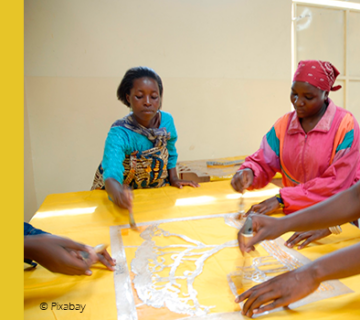A cultural exchange project breaks down the barriers between Haitian migrants and the community of La Romana in the Dominican Republic.
The Dominican Republic is a country in the middle of the Caribbean Sea that shares the territory of the island of Hispaniola with Haiti. Historically, it has a cultural value for the entire American continent, since it was there that Christopher Columbus landed on his first voyage.
Both countries share cultural and historical roots, but also have contrasts that have separated them for centuries. Haiti is the poorest country in the Americas. Political instability and internal violence have caused thousands of people to migrate to other countries.
Every year thousands of migrants cross the border from Haiti to the Dominican Republic in search of a better future, creating tensions between the two nations.
“It is estimated that there are about 2 million Haitians in the Dominican Republic. They come mainly to work in the cultivation of sugar cane, because there are several sugar factories here, “says Modesto Herrera, a doctor who is part of the Focolare community in the Dominican Republic.
Although there is mutual exchange between these neighbouring peoples, there are also latent tensions and discrimination against Haitians living in the Dominican Republic. One of the biggest barriers is language, because in the Dominican Republic the language is Spanish, while in Haiti Creole is spoken.
A few years ago, the Focolare community of La Romana began a project that aims to create bonds of fraternity with Haitian migrants living in neighbouring cities.
“We work in the parish where there is a “Batey”, a rural community of sugarcane workers, mainly made up of Haitians,” says Sandra Benitez, a businesswoman.
Although many had never visited the Batey because it is a remote area of the city, a group of young people and other members of the community decided to break down the barrier that has divided them for years and began to visit it. They
gradually discovered that the Haitian community needed to be integrated into society. La Romana is known for its textile industry. “We saw the potential of young people and decided to work in the textile sector,” says Cristian Salvador Roa, who teaches sewing to the Haitian community. He adds: “It gives me great satisfaction to see that young men no longer wasting their youth, but becoming productive and who start to make the most of their lives by doing something productive.”
“The best testimony we can give is that, given the barrier of language, the barrier of social bias, when that barrier is broken, we discover the great wealth that can be found in a culture or that can be found in sharing our human condition with others,” concludes Concepción Serrano, an industrial engineer.
Clara Ramirez


 Italiano
Italiano Español
Español Français
Français Português
Português




No comment